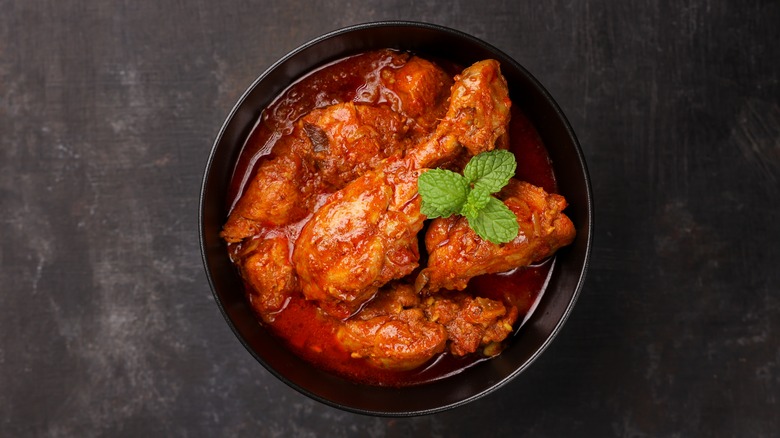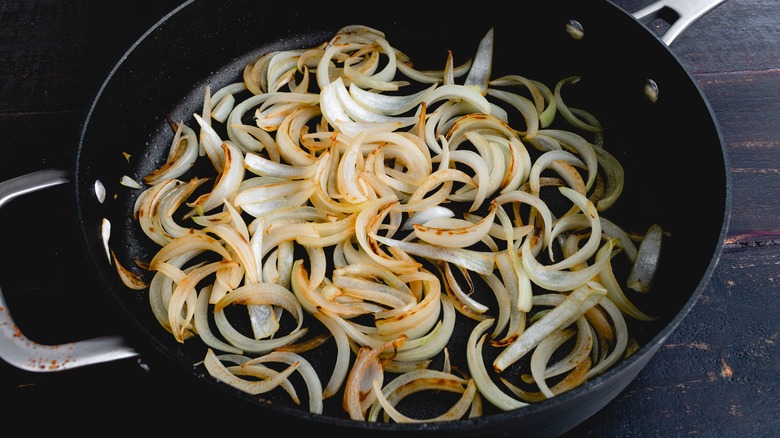For Maximized Curry Chicken Flavors, Avoid This Common Mistake
If you're just starting down the road of making Indian chicken curries, we envy you. A whole world of wonderful flavor combinations await — from creamy, mild kormas to the fiery, coconut-y Andhra Kodi Kura to a luscious, tomato-based Bhuna Masala, there's something for every taste and temperament. Despite the multitudes of regions and techniques that fall under the catch-all name of "curry," many of these dishes have a few things in common. With few exceptions, they call for onions and spices. If you're currently enrolled in Chicken Curry 101, be sure to learn these indispensable techniques early: Onions need to be fried first, usually until lightly caramelized, then the spices — whether whole or ground — need time to be incorporated into the onions, gently frying until they become fragrant.
You might think that neither of these steps is that important — the onions and spices will cook through and inform the curry anyway, right? Actually, no, several things are accomplished by sauteing these ingredients first. The bottom line is that the flavor and texture of your curry largely depends on taking the time to do things correctly in the early stages. Conversely, not frying the onions and spices will work against you: The onions will never caramelize and, therefore, will be less digestible and sweet. Even worse, the taste of some raw spices can be bitter and need sauteing to release their essential oils.
Tips for preparing your onions and spices
Frying onions in hot oil until they're lightly browned does more than make your kitchen smell amazing. It improves digestibility by lowering the onion's acidity and also increases their sweetness by releasing natural sugars. The longer you brown onions, the sweeter they become. If you push it right up to the point burning (when thinly-sliced onions take on a deep, reddish-brown hue), they will become as crisp as bacon and sweet as candy. This is not a process you want to hurry: Keep your heat on medium and stir frequently until the onions turn translucent and start to brown. Rocking it like a stir fry can lead to uneven cooking and burned edges.
In a similar way, raw spices like cinnamon, cloves, cumin seeds, and cayenne pepper change personalities when fried in hot oil, becoming more nuanced and deeply flavored. This part of the curry-making process is mostly centered on incorporating the spice masala into the onion mixture and takes much less time than the initial frying. Sprinkle the spices over the onions and let everything sit for a moment or two. Whole spices like cinnamon sticks or cardamom pods will ultimately puff up; otherwise, everything will just become redolent. Stir to incorporate, then proceed to the next step of your curry recipe of choice. If your pot starts smoking, your heat is too high, or you've let it fry for too long!

